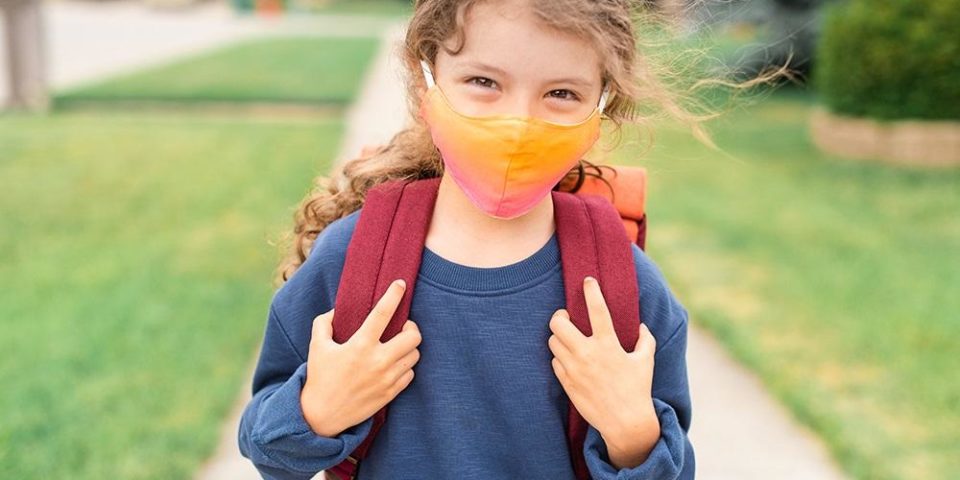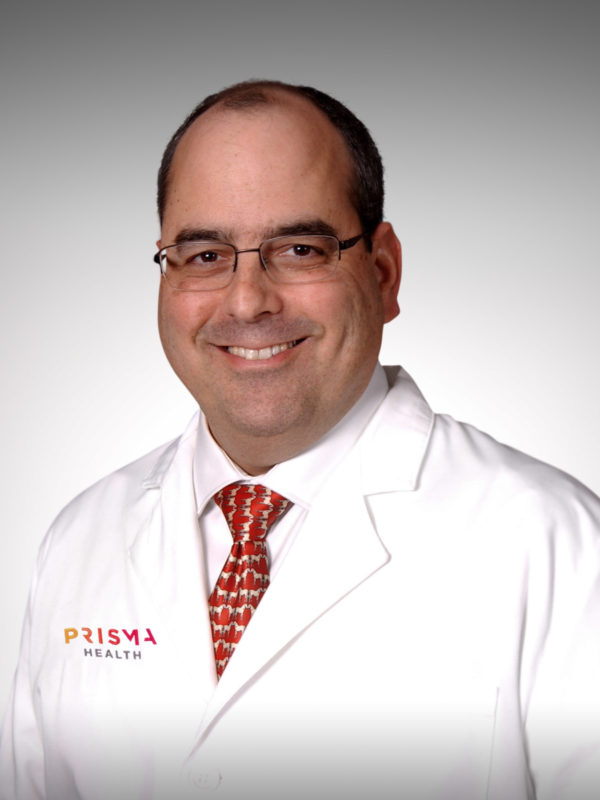Should kids wear masks? Yes, and here’s why
It’s important for everyone to wear face masks to slow the spread of COVID-19 – even children. Because there has been a lot of discussion about masks, pediatric pulmonologist Michael J. Fields, MD, PhD, Prisma Health’s Associate CF Center Director and Medical Director for Pediatric Respiratory Care Services, answered some common questions.
Do masks even work?
The air you breathe out contains droplets of varying sizes. The biggest ones rapidly fall to the ground, but as droplets get smaller, they are able to stay in the air longer. This means they are able to travel farther from your mouth before hitting the ground. The smallest can “float” for more than 30 minutes. All of these particles can carry the virus.
The mask reduces the amount of virus that passes into the environment AND reduces the distance that the virus can travel from the source. This is how the mask prevents spread of the disease. My mask protects you and your mask protects me!
Should you wear a mask if you have no symptoms?
Since people are contagious before they have symptoms (pre-symptomatic spreaders) and there are people who are infected and never have symptoms (asymptomatic spreaders), much of the spread is coming from people who don’t even know they have COVID-19. Therefore, everyone must assume that everyone around them is spreading the virus. We all should wear a mask and maintain social distance at all times.
Is it safe for children to wear masks? What if my child has a disability?
There are very few situations in which a mask should not be worn. They include:
- Kids under the age of 2 years
- People who cannot remove the mask by themselves in case of emergency
- Those with serious disabilities
Children with disabilities such as autism or sensory issues may or may not tolerate a mask, and it should be addressed on a case-by-case basis. Perhaps they could wear a mask during short periods of time during higher risk events. For patients who are deaf, a clear face shield could be worn by others to preserve the child’s ability to read lips. Everyone should wear a mask and the number of exceptions should be very limited.
What if my child has asthma?
One point which is frequently misunderstood is that people with breathing problems are advised not to wear a mask. The issue is the definition of a “breathing problem.” People who are actually sick at that moment with a breathing problem – an ongoing asthma attack, a pneumonia, or a severe allergic reaction – should not wear a mask. This is a very time limited situation. Masks should be used consistently before and after these emergency events.
People with asthma absolutely SHOULD wear a mask as their risk for serious illness is increased compared to someone without asthma. If a patient with asthma feels discomfort while wearing a mask, then they should consult their doctor as their asthma is likely not properly controlled.
How do we help children keep their masks on?
First, the important adults in the child’s life must model mask wearing. This will show the child the importance of the mask and will encourage them to participate. Start with mask wearing for a short period of time at home when the child is rested and relaxed – 15 or 20 minutes to start. Then increase the time with the mask in place up to the goal. For younger children, 4–5 hours may be the maximum they will need. For older children, 8–9 hours may be needed.
If children wear a mask, is it safe to return to school?
Children learn best with in-person instruction. Their educational and social needs are much more successfully met in the classroom. However, we must make the school environment reasonably safe. In the past I would never accept “reasonably safe.” Currently, the only thing that is completely safe is to stay home and have no contact with those who are not fully isolating as well. For people with significant risk factors – elderly, obesity, immunodeficiency – staying at home and away from all others is the most prudent solution.
For most children and families, a set of “reasonable” criteria for returning to in-person instruction should include:
- An assessment of viral transmission in the community.
- Steps that the schools can take to limit transmission.
Schools can limit transmission by spacing the students’ desks at least 3 feet apart, adjusting how children move through the hallways, adjusting where and when they eat, etc. When these measures are combined with hand hygiene, social distancing and mask use, a picture of the situation becomes clearer, and the identification of “reasonable” criteria becomes more clear.
Can wearing a mask make you sick?
While wearing a mask can be uncomfortable, it is NOT dangerous. Oxygen and carbon dioxide continue to flow freely, as they are much smaller than the virus. When frequent hand hygiene and social distancing are added, our ability to reduce the spread of the virus is magnified. Together, we can make a big impact!
Need care today?
Use an E-Visit for quick, convenient care. Just go online, answer questions about your symptoms and submit.
Get Care Now

